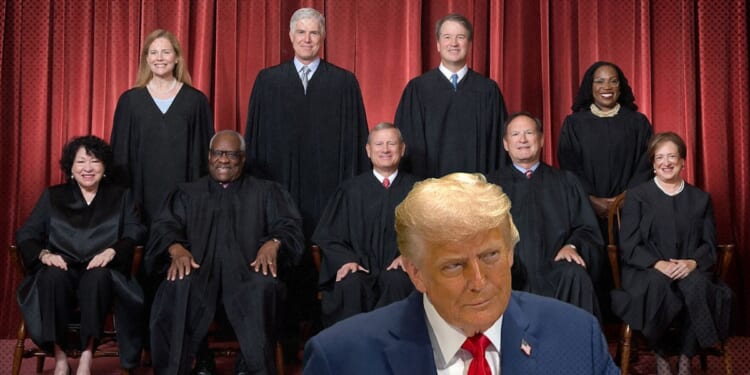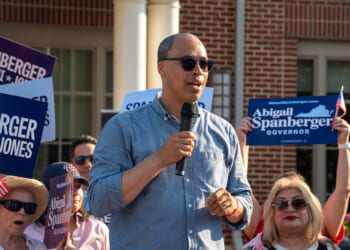While a few observers have noted the two-decade history of the Supreme Court under the leadership of Chief Justice John Roberts, most of the media is portraying the newly started Supreme Court term as “consequential,” “monumental,” and “a reckoning” with President Donald Trump.
If it seems like SCOTUS never really went away this summer, that’s probably the truth — more than in most summer breaks, the justices were kept busy by a number of cases placed on its emergency docket. Most of those legal issues were attempts by left-leaning states or groups to curb the executive branch as President Trump issued a number of executive orders and tried to remove personnel who wouldn’t follow through on his agenda, such as Federal Reserve governor Lisa Cook, a Biden appointee whose term otherwise wouldn’t expire until 2037.
Many of those items from the summer’s emergency docket will become cases for a more formal ruling from the Court over the next several months, a chock-full 2025-26 term that has the potential to blow past the normal completion date on the last Friday in June once again.
The consensus among Court observers seems to be that the term will finally dictate the limits by which President Trump can run the executive branch — as NPR put it, the session will “tackle executive power, executive power, and executive power.” Meanwhile, the AP called the term a response to an “aggressive assertion of presidential power.”
“Now, as these cases begin to reach the court for full arguments,” warned Justin Jouvenal in The Washington Post, “the justices will have to be more forthcoming, with full opinions that detail their thinking.” To Jouvenal, it was a binary choice: “The cases will force the justices to either embrace Trump’s sweeping assertions of presidential power or curb them. They set up a major test for the reputation of the court and the success of the president’s agenda, and either way, they appear certain to reshape the law.”
Because this is the first full Supreme Court term under President Trump — the agenda last year was mainly in response to governmental and regulatory overreach by President Joe Biden as opposed to the idea of the unitary executive that President Trump is working toward — the Court will spend a lot of time developing guidance for the lower courts, who ruled against Trump an astonishing 94.3% of the time in May and June, according to Adam Bonica, a professor of political science at Stanford University. In 15 of 16 cases that reached SCOTUS in that time period, though, the high court backed Trump’s side.
“A big fraction of the Supreme Court’s docket will present the question: ‘can President Trump do?’ — then fill in the blank,” said constitutional law expert Thomas Dupree. “And that could be imposing tariffs; firing independent board members; removing illegal aliens; sending the military into cities like Los Angeles. So, much of what the Supreme Court is deciding this term is whether the president has acted within or has exceeded his authority.”
There are a number of other items the Court will decide, though, with one of the most important being voting rights. A Louisiana case questions the idea of race-based redistricting, deciding whether Section 2 of the Voting Rights Act violates the Constitution.
Furthermore, right off the bat, the justices will hear a case out of Colorado about so-called conversion therapy, which has been deemed illegal in 20 states. Plaintiff Kaley Chiles “argues that the law forced her to deny voluntary counseling on exploring sexuality and gender in violation of both her and her clients’ religious beliefs and free speech rights.” On that same front, “transgender” participation in sports will also be a hot topic.
And what term is complete without the parlor game of speculating about justices retiring? The Associated Press notes that Justice Samuel Alito is 76, speculating “he might not want to stay around and gamble on the possibility of Democrats flipping the Senate in next year’s elections and seeing a Democrat capture the White House two years later.” The AP seems to be aggressively asserting that it’s time for him to go, although that would enable Trump to name another young conservative firebrand with a compliant Senate.
It’s also worth pointing out that the justices will also have more personal protection than in years past, given the targeting of Justice Brent Kavanaugh in 2022 by a man outraged by the Dobbs decision. In the wake of the Charlie Kirk assassination, the Trump administration has asked Congress to approve an additional $58 million for security. Even so, Americans have an improved opinion on the Court’s job, rebounding from a low of 38% approval last year to 47% this year, according to a Fox News poll.
Yet for all that we’ve complained at times about John Roberts and his leadership of the Court, a lot of good has come out of his tenure, as more conservative justices formed the cavalry we were waiting for. As The Wall Street Journal editorial board opines:
Think of how the law has changed. On gun rights, the Court said the Second Amendment includes an individual right to bear arms (D.C. v. Heller, 2008). It has since solidified that ruling and is likely to continue.
Its First Amendment jurisprudence has been especially strong and significant. This includes protecting corporate and union political speech (Citizens United v. FEC, 2010); blocking coercive public union fees from workers (Janus v. Afscme, 2018); and overturning the cramped view of religious liberty that prevailed at the 20th-century Court.
The Justices said states can’t exclude religious schools when providing for K-12 scholarship money (Espinoza v. Montana Department of Revenue, 2020). They said religious business owners can’t be forced by ObamaCare to provide insurance coverage for what they view as abortifacients (Burwell v. Hobby Lobby, 2014). They ruled for the Little Sisters of the Poor and a Colorado cake baker against coercive secular governments.
The Chief in particular has been a stalwart on the colorblind Constitution. “The way to stop discrimination on the basis of race is to stop discriminating on the basis of race,” he wrote in 2007, a line that will long echo. The Chief also wrote the opinion saying colleges can’t use racial preferences (Students for Fair Admissions v. Harvard, 2023).
Indeed, the conservative idea of limited government has been advanced with the Roberts Court. And while there are places where the justices could set us up even better on an originalist path, on balance, there has been progress. Let’s hope the new term brings much more.
















